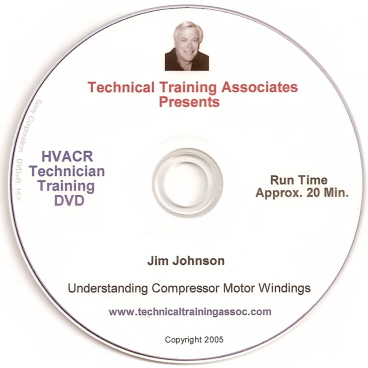You may be familiar with the formula BTUH = CFM x ΔT x 1.08. This same formula is often rearranged to use for determining airflow by measuring the heat input and temperature rise.
CFM=BTUH/( ΔT x 1.08)
To get the BTU per hour (BTUH) with electric strips you use the formula:
BTUH = volts x amps x 3.41 BTUH/watt
Together the formula looks like:
CFM = (volt x amps x 3.41)/ ( ΔT x 1.08)
The factor 3.41 comes from physics. It is the number of BTUs produced by one watt-hour of electricity. But where does the 1.08 factor come from? The "magic number" 1.08 is convenience factor. It is basically a bunch of math combined into one factor as a shortcut. You may recall that the specific heat formula is used for changing the temperature of something. The specific heat formula is:
BTU = weight x ΔT x Specific Heat
This has one big problem: we don’t measure airflow by weight, but by volume. AHRI Standard air weighs 0.075 pounds per cubic foot. We can convert a volume to a weight by multiplying the volume by 0.075 lbs/ft3. Another issue is that we tend to measure airflow by the minute and BTUs by the hour. You can fix that by multiplying times 60. Finally, we need the specific heat of air, which is 0.24. When you multiply the air volume by 0.075 to turn CFM into pounds per minute, multiply pounds per minute by 60 to get pounds per hour, and multiply by the specific heat of air 0.24, you end up with 1.08 (60 x .075 x 0.24 = 1.08). The number is not really a constant because the volume of the air varies a lot with temperature, which changes the "magic number."
This formula is accurate for dry air at around 70°F, but it is not accurate when the air temperature gets very much colder or warmer than 70°F. For example, 1.08 really does not work with flue gas or airflow in freezers because the air volume has changed, which changes the convenience factor. At 400°F the air only weighs 0.043 lbs/ft3. So the convenience factor changes to 0.62(60 x 0.043 x 0.24 = 0.62). At 0°F, a cubic foot of air weighs 0.086 lbs/ft3. This changes the convenience factor to 1.24 (60 x 0.086 x 0.24 = 1.24). The weight per volume also changes with elevation and humidity, although the change due to humidity is small. Even the specific heat changes as the air temperature changes, but again, the changes are small.
This is all to say that if you are dealing with air around room temperature, feel free to use the 1.08 convenience factor. However, if you are dealing with air at a much different temperature, you should look up the weight of air at the temperature you are working with. The table below lists the weight of a cubic foot of air at different temperatures so that you can perform correct air calculations at temperatures other than 70°F.
| Temperature | Weight lb/ft3 | Convenience Factor | Temperature | Weight lb/ft3 | Convenience Factor |
| 0°F | 0.08625 | 1.24 | 175°F | 0.06255 | 0.90 |
| 10°F | 0.08441 | 1.22 | 200°F | 0.06018 | 0.87 |
| 20°F | 0.08265 | 1.19 | 225°F | 0.05797 | 0.84 |
| 30°F | 0.08096 | 1.17 | 250°F | 0.05591 | 0.81 |
| 40°F | 0.07935 | 1.14 | 275°F | 0.05399 | 0.79 |
| 50°F | 0.07780 | 1.12 | 300°F | 0.05219 | 0.76 |
| 60°F | 0.07631 | 1.10 | 325°F | 0.05051 | 0.74 |
| 70°F | 0.07487 | 1.08 | 350°F | 0.04894 | 0.72 |
| 80°F | 0.07349 | 1.06 | 375°F | 0.04746 | 0.70 |
| 90°F | 0.07217 | 1.04 | 400°F | 0.04608 | 0.68 |
| 100°F | 0.07089 | 1.02 | 425°F | 0.04478 | 0.66 |
| 110°F | 0.06965 | 1.00 | 450°F | 0.04357 | 0.64 |
| 120°F | 0.06846 | 0.99 | 475°F | 0.04242 | 0.63 |
| 130°F | 0.06730 | 0.97 | 500°F | 0.04134 | 0.61 |
| 140°F | 0.06619 | 0.95 | 525°F | 0.04031 | 0.60 |
| 150°F | 0.06511 | 0.94 | 550°F | 0.03933 | 0.59 |









